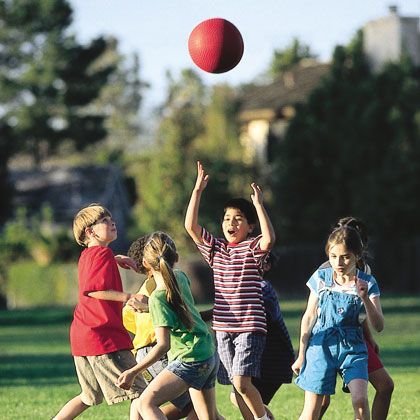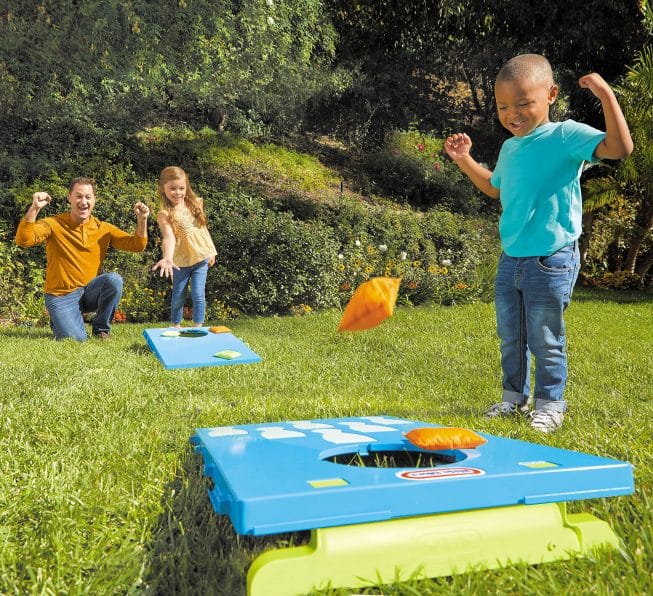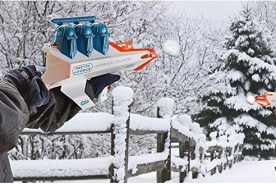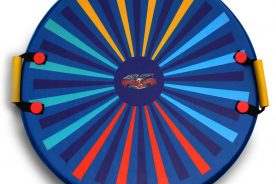Introduction to Playing Hide and Seek
Ollie, Ollie in come free!
It seems that hide-n-seek could be one of the most well-known children's games.
For thousands of years, the timeless children's game of hide-n-seek has been played all across the globe all with one goal in mind— Not to be seen and be dubbed, “it”.
By the way, if you're it, don't take it personally, it's all a part of the game.

Variations aside the simplicity of this game are what makes it so appealing, yet there are possibly deeper meanings and reasons why this game has stood the test of time and has been played by children all across the world.
Let's take a look at the history of this game along with some other outdoor games that kids can play. And by kids, that means you too. Don’t worry you’ll remember how to play.
Ready or not, here I come!
- The world of Hide-n-Seek
- Where did hide-n-seek originate?
- Why is Hide and Seek So Popular
- Home Base Hide and Seek
- Tag Hide and Seek
- Hide and Seek Move
- Capture the Flag
- Ghosts in the Graveyard
- Cornhole
- SPUD
- Four Square
- Can Hide and Seek be an indoor game?
- Where is the best place to hide in hide and seek?
- How long does it take to play hide and seek?
- What do kids say while playing hide and seek?
Hide and Seek: A History
How is it that hide and seek came about, and who invented this game?
It's believed that the ancient Greeks came up with the game of hide and seek, but the history of this game is international. Across the world, kids have gathered together and set their rules and played this game for hours on end.
The different languages didn’t change much about the game, to the contrary, if anything it brought even more variations that could be played and enjoyed.
The world of Hide-n-Seek
In South and Central American countries, it is known as, escondidas, or cucumbè. In Spain, it is called el escondite. In Romania, it's de-av-ati ascunselea and in South Korea, it goes by the name of sumbaggoggil. In India, it's called chuppan chuppa, and Bolivian children play tuja.
So as you can see this is an outdoor and indoor game that has traveled the world and offered hours of exhilarating fun to children from the four corners of the globe.
Where did hide-n-seek originate?
The origins of hide and seek date back thousands of years it is believed to have been invented by the Greeks that went by the name of “aprodidraskinda”, (ἀποδιδρασκίνδα – literally translates into English as “escape”)

Why is Hide and Seek So Popular
If you ask the experts they will tell you about things like,
- Discovering object permanence
- Personal problem-solving skills
- Physical exercise
- Improves agility and coordination
- Conflict rules
- Taking turns
- Teamwork
- Playing well with others
If you ask a kid they are probably not going to give you any of these answers. They are going to say it like this…
Hide and seek is so popular because it's fun!
Think back and try to remember when you were playing hide-n- seek with your friends. What was it that made this game one of the first things that are thought of when you wanted to play a game together?
It never failed that when a bunch of kids got together someone would ask the question—Do you want to play hide-n-seek?
The second the question was asked you would start looking around for possible hiding places. And don’t forget the speedy countdowns that came when it was decided that you could count by fives. You can feel the pressure right now, can’t you?

The absolute response as to why this game is popular may never be defined in a single sentence, but it is without a doubt still to this day a very popular game for kids to play.
Rules for Hide and Seek
Number of players: at least two
Space needed: Indoors or outdoors
Equipment needed: No equipment is necessary
The basic rules of hide and seek are that there is a counter, also known as the seeker, and there is a person or persons that are the hiders. Oftentimes the seeker is referred to as “it” as in “tag your it” or “not it”.
A designated number to count up to by the seeker is decided upon, and the counting will begin when the counter closes their eyes. Once the counting begins then everybody scatters, staying within the designated playing field and trying to find the place where they will not be the first one found. The first person found is “ it” in the next round.
Simply put, don’t let the seeker find you. The rules can vary according to the group consensus but the basic rules remain the same. The rules were generally laid out quickly and the first time you ever play the only rule you remember is—quick, hide!
Hide and Seek Game Variations
As with any game there always seems to be variations, rule changes and added difficulties and challenges, as well as adaptations that can be added to the basic rules. This actually keeps games fresh and exciting and gives the chance for younger players as well as more experienced players to be able to enjoy these games as well.
Home Base Hide and Seek
Hide and Seek with a home base gives the hiders a chance to sneak their way back to a designated home base before the seeker finds them.
Tag Hide and Seek
In this version it's no longer only the seekers part to find the person but know they will have to tag them.
Hide and Seek Move
In the original version once you have found your hiding place it's a general rule that you have to stay put and keep as quiet as possible. But in Hide and Seek Move, as the name indicates you can move around before the seeker finds you.
Other Popular Outdoor Games to Try
Capture the Flag
Number of players: 6 or more
Space needed: Large outdoor space/ it can be played indoors and in smaller places but ideally the game needs space
Equipment needed: 2 flags, 2 large sticks, and string

This classical team game can be played either indoors or outdoors. The objective of Capture the Flag is to steal the other team's flag and get it back to your home base. The playing field is split up into two equal territories and each team will hide their flag.
A “jail” is set up on each team's side and tagged players from the other team are jailed and can only be released if they are tagged by a team member.
So there are team members who are looking for the other team's flag and members who are guarding their team's flag. Strategy and teamwork are going to win this game.
Might help to be fast on your feet as well.
Ghosts in the Graveyard
Number of players: 3 or more
Space needed: outdoors
Equipment needed: dusk or night time

This is a hide-and-seek type of game but with a twist. In this game, Ghosts in the Graveyard, the person who is “it” is the one who hides, and everyone else closes their eyes and tries to find them. The ghost tries to remain hidden while the seekers try to find them.
When someone spots the ghost they will yell out, “ghost in the graveyard”, and then everyone will have to race back to home base while the ghost tries to tag them. The ghost while hidden is waiting to jump out and scare someone and tag them making that person the new “it”. The new seeker can also be the last person back to home base if the ghost doesn't tag anyone.
Cornhole
Number of players: 2-4
Space needed: Boards are set 24-27 ft apart
Equipment needed: 2 angled boards, 4 bean bags, 2 red, 2 blue (or two different colors)
Purchase the Little-Tikes Cornhole Game
The object of this toss game is to throw a corn-filled fabric bag through a hole in tilted board platform some distance away. This game has several names attached to it but the one most used and preferred by the many who have made this an actual sport cal it Cornhole.
The history of this game as it’s known now started in the early 1970s with a Popular Mechanics article and has gained popularity over the years to the point now there is a cornhole association for league play. Depending on the level you wish to play at, this game can be exciting for all ages with assorted rules and terminology to go with it.
The ACA American Cornhole Association is your one-stop shop for boards, bags, community, kid's gear, and everything cornhole you can possibly imagine.
SPUD
Number of players: 5- no maximum
Space needed: A fair amount of open space
Equipment needed: a ball, a safe ball

The goal of SPUD is to throw the ball at the players and when they are hit or catch the ball they will get a letter. Each time that player is hit they will receive the letter until it spells out SPUD at which time they would be considered “out”.
This game requires enough space for players to be able to run.
Each player is given a number and one player is the starter. The starter throws the ball high into the air and everyone runs away from the ball except the person whose number is called by the starter. That person gets the ball and everyone yells SPUD and freezes.
You can't move or keep running or you receive a letter. The target can dodge the ball if possible but their feet must stay planted. If they move they get a letter, if they successfully dodge the ball, the thrower gets the letter. Whoever got the letter is the starter of the next round. They will throw the ball in the air and call out a new number.
The object is to not get any letters.
Four Square
Number of players: 4 or more
Space needed: 10 ft x 10 ft square
Equipment needed: chalk or tape for marching boundaries, ball
Four Square game is a fairly rule-intensive game but once the flow of the game is established it can move rather quickly.
The basic idea is to advance from the lower-ranking square, then the higher-ranking square. There are serving techniques that are utilized, boundaries, and possession rules.
FAQ’S
Can Hide and Seek be an indoor game?
Yes, Hide and Seek can be played indoors. Playing indoors is especially suited for smaller children who aren't quite as coordinated or physically able to choose hiding places.
Where is the best place to hide in hide and seek?
The best place to hide in hide and seek is in a place that completely covers you and to not pick the obvious places the seeker will be sure to look first.
How long does it take to play hide and seek?
It takes as long as it takes. I can go on for quite a while until the last person is found. I'm sure that's why the “ollie, ollie in come free” was invented to keep the game from lasting too long when the seeker can’t find everyone.
What do kids say while playing hide and seek?
Ready or not, here I come!







No Comments